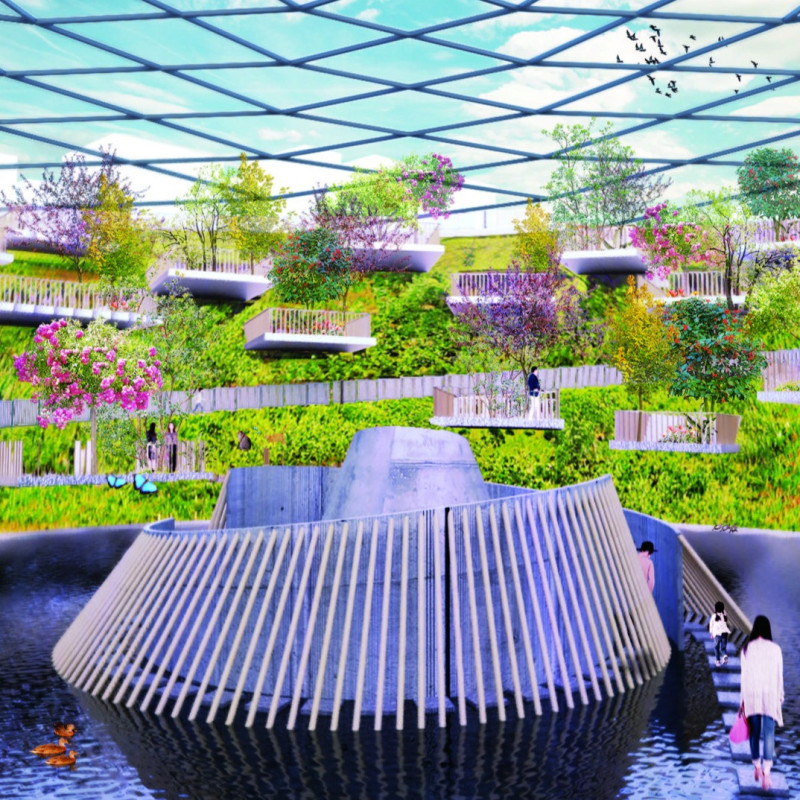5 key facts about this project
At its core, the project's design represents an interplay between form, function, and site. The unique architectural approach is evident in the careful consideration of spatial organization which enhances user experience while promoting a sense of connectivity among spaces. Each area within the structure serves a specific purpose, from communal zones that promote social interaction to private spaces that prioritize comfort and functionality. The thoughtful arrangement of these elements reflects a deep understanding of how users will inhabit the space, fostering a harmonious atmosphere that encourages collaboration and productivity.
The façade of the building is a defining feature, utilizing a blend of materials that speak to both durability and aesthetic appeal. Materials such as textured concrete, glass, and sustainably sourced timber are employed to create a visual narrative that resonates with the modern context while ensuring long-term performance. Glass expanses have been strategically placed to maximize natural light, offering stunning views of the surroundings and enhancing the interior ambiance. The incorporation of natural elements not only reinforces the architectural ethos of sustainability but also invites the outside in, blurring the lines between interior and exterior spaces.
Unique design approaches are apparent in various aspects of the project. The integration of green roofs and living walls addresses environmental concerns while contributing to the building's energy efficiency. This design choice reflects an understanding of the importance of incorporating nature within urban environments, offering both ecological benefits and aesthetic richness. Additionally, the layout allows for cross ventilation and passive solar heating, reducing the reliance on mechanical systems and further emphasizing the project’s commitment to sustainability.
Attention to detail is evident in the selection of finishes and fixtures that enhance the overall design narrative. Custom-designed elements, including furniture and lighting, have been created to complement the architecture, ensuring that every aspect of the space aligns with the project’s overarching vision. The considerations extend to accessibility, with thoughtful pathways and facilities that cater to all users, thereby addressing inclusivity in design.
Moreover, the architectural plans reflect a comprehensive approach to spatial layout, including detailed sections that illustrate the interplay of volumes. The project emphasizes open spaces that encourage flexibility, allowing for various uses over time. This adaptability is a testament to the forward-thinking nature of the design, recognizing that the needs of communities evolve and architectural responses must accommodate these changes.
The project boasts a unique identity, one that resonates with the community while contributing to the urban fabric in meaningful ways. Its design is not only an architectural statement but also a response to localized needs, offering a place that fosters human connection and engagement. Users are invited to explore the various layers of the project, from the beautifully articulated entrances to the multifunctional interiors that adapt to different activities throughout the day.
In summary, this architectural project is a well-considered manifestation of contemporary design that values the relationship between space, people, and the environment. By integrating thoughtful planning, sustainable materials, and innovative design solutions, it establishes a strong presence in its urban context. To gain deeper insights into this project, including its architectural plans, sections, and design ideas, readers are encouraged to explore the presentation further. Engaging with these elements will provide a comprehensive understanding of how the project not only serves its immediate functions but also enhances the broader community experience.


 Takeshi Daicho,
Takeshi Daicho, 




















